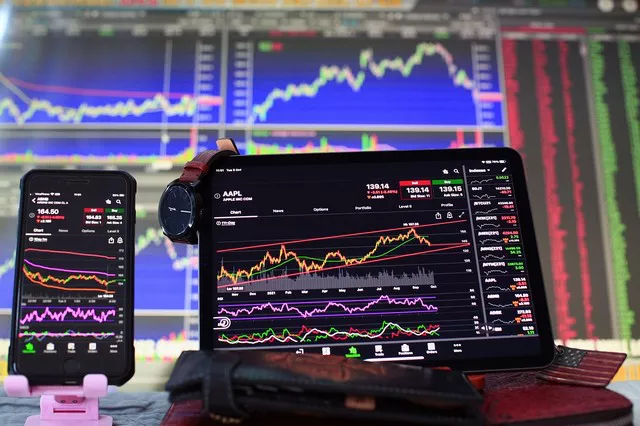In the world of finance, the relationship between major financial institutions and indices often raises questions about ownership, influence, and market dynamics. Among these, the Chicago Mercantile Exchange (CME) and the S&P (Standard & Poor’s) index are two entities that hold significant sway over the global financial markets. This article delves into the intricate relationship between CME and the S&P index, exploring the extent of ownership, the implications for traders and investors, and the broader implications for the financial landscape.
Understanding CME and S&P
Before delving into the question of ownership, it’s crucial to understand the nature of both the Chicago Mercantile Exchange and the S&P index.
The Chicago Mercantile Exchange, founded in 1898, is one of the world’s largest and most diverse derivatives exchanges. It offers a wide range of products, including futures and options on interest rates, equities, commodities, and foreign exchange. Over the years, CME has played a pivotal role in shaping the futures trading landscape, providing a platform for investors to hedge risk and speculate on price movements across various asset classes.
On the other hand, the S&P index, maintained by Standard & Poor’s Financial Services LLC, is one of the most widely followed equity indices globally. It comprises a basket of stocks from leading companies across multiple sectors, providing investors with a benchmark to track the performance of the broader stock market. The S&P 500, in particular, is often regarded as a barometer of the U.S. economy’s health and serves as a foundation for numerous investment products, including index funds and exchange-traded funds (ETFs).
Ownership Structure of CME and S&P
One of the fundamental questions that often arises is whether CME owns the S&P index. To clarify, CME does not own the S&P index outright. Instead, the relationship between the two entities is more nuanced.
CME Group, the parent company of the Chicago Mercantile Exchange, does have licensing agreements with S&P Dow Jones Indices LLC, the division of S&P Global responsible for index calculation and maintenance. These agreements allow CME to offer futures and options contracts based on various S&P indices, including the S&P 500.
While CME has a financial interest in offering derivatives products linked to the S&P indices, it does not have direct ownership or control over the composition or calculation methodology of these indices. S&P Dow Jones Indices retains autonomy in managing its indices, including periodic rebalancing and methodology updates.
Implications for Traders and Investors
Understanding the relationship between CME and the S&P index is crucial for traders and investors navigating the financial markets. Here are some implications to consider:
Market Access: CME’s derivatives products tied to the S&P indices provide market participants with efficient access to a broad range of equity markets, allowing them to hedge risk, speculate on price movements, and diversify their portfolios.
Liquidity and Price Discovery: The availability of futures and options contracts on the S&P indices enhances market liquidity and facilitates price discovery. Traders can execute trades with minimal slippage, reflecting the collective market sentiment regarding the underlying stocks.
Risk Management: For institutional investors, CME’s S&P derivatives offer valuable tools for risk management. By using futures and options contracts, investors can mitigate exposure to equity market fluctuations, protecting their portfolios against adverse movements.
Arbitrage Opportunities: The relationship between CME futures contracts and the underlying S&P index creates arbitrage opportunities for savvy traders. By exploiting price differentials between the futures market and the cash market, traders can profit from inefficiencies in the pricing mechanism.
Volatility Trading: Volatility derivatives based on the S&P indices, such as VIX futures, allow traders to capitalize on market volatility trends. These products have become increasingly popular as investors seek ways to hedge against or profit from fluctuations in market volatility.
Regulatory Oversight and Market Integrity
Given the significant role that both CME and the S&P index play in the financial markets, regulatory oversight and market integrity are paramount. Both entities are subject to regulatory scrutiny from various authorities, including the Commodity Futures Trading Commission (CFTC) for CME and the Securities and Exchange Commission (SEC) for S&P Dow Jones Indices.
Regulatory oversight aims to ensure fair and transparent markets, safeguarding the interests of investors and maintaining market integrity. This oversight includes monitoring trading activity, enforcing compliance with trading rules and regulations, and addressing any instances of market manipulation or abuse.
Conclusion
In conclusion, while CME does not own the S&P index outright, its licensing agreements with S&P Dow Jones Indices allow it to offer derivatives products based on various S&P indices. This relationship provides traders and investors with valuable market access, liquidity, and risk management tools, while also creating arbitrage opportunities and volatility trading strategies.
Understanding the dynamic interplay between CME and the S&P index is essential for navigating the complex landscape of futures trading and equity market investing. By staying informed about the relationship between these key market players, traders and investors can make well-informed decisions and effectively manage their portfolios in an ever-changing financial environment.


